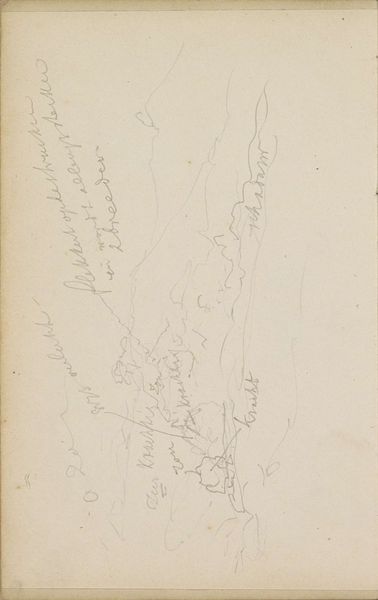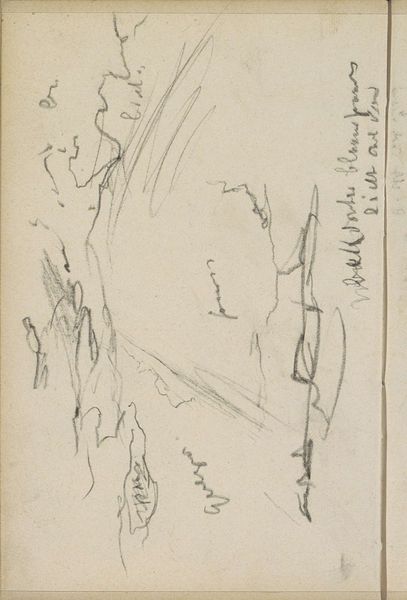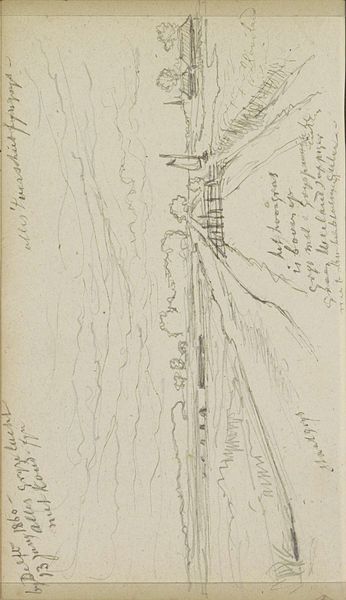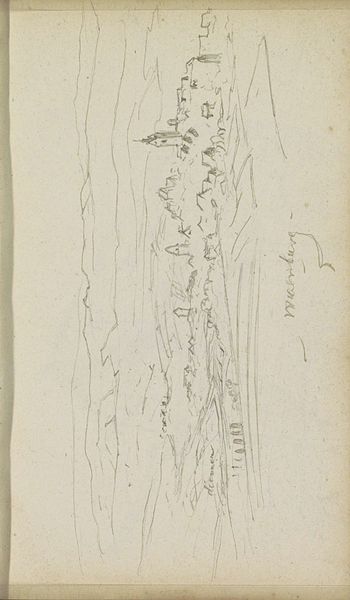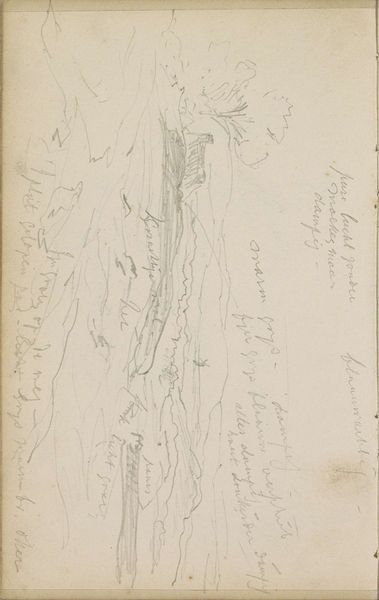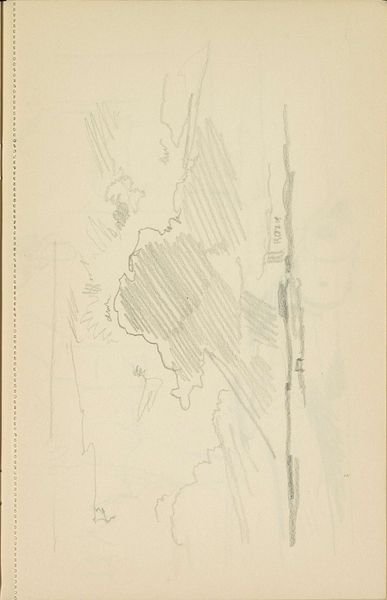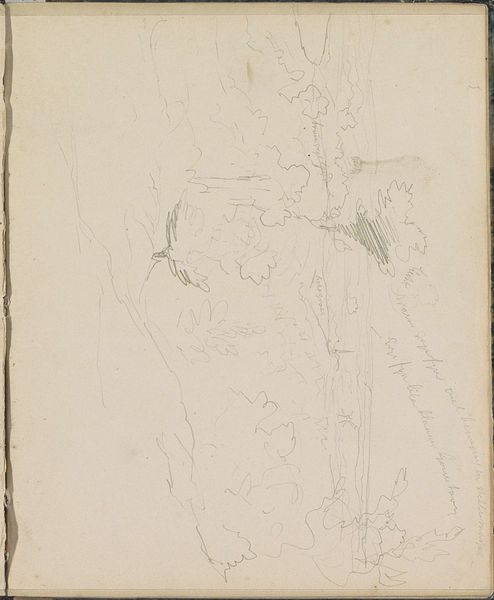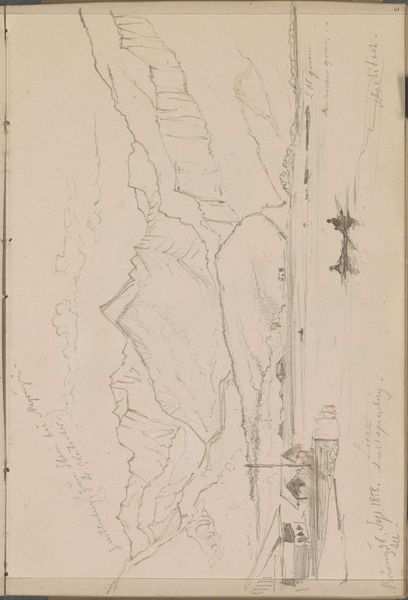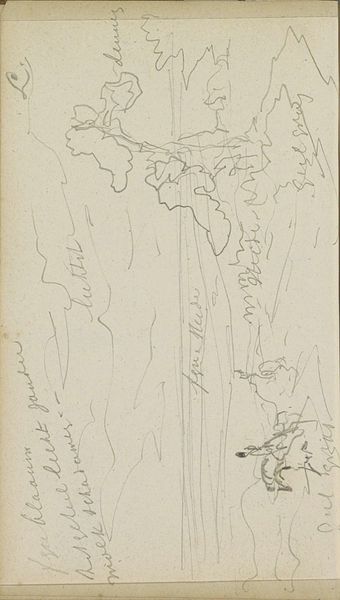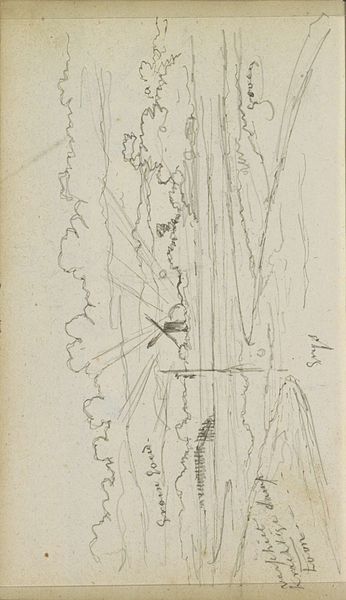
drawing, paper, pencil
#
tree
#
drawing
#
amateur sketch
#
light pencil work
#
pen sketch
#
pencil sketch
#
incomplete sketchy
#
landscape
#
paper
#
personal sketchbook
#
ink drawing experimentation
#
pen-ink sketch
#
pencil
#
sketchbook drawing
#
sketchbook art
#
realism
Copyright: Rijks Museum: Open Domain
Curator: Johannes Tavenraat’s drawing, “Boomstam,” dating from after 1854, captures a tree trunk with delicate strokes on paper, currently residing at the Rijksmuseum. It feels remarkably ephemeral, doesn’t it? Almost weightless in its execution. Editor: Indeed. My immediate sense is one of rawness, an unfiltered look at the artist’s process. It's the kind of piece that draws attention to the very act of sketching. The quick pencil lines convey a sense of immediacy, almost like a study from life. The rough marks suggest the material of the trunk, not a finished, polished tree, but just the tree's material body in a sense. Curator: Absolutely. Tavenraat employs a skillful use of line weight to suggest form and texture. Look closely; notice the layering of the pencil marks, building depth in specific areas of the trunk. Also the choice of a slender line has an inherent grace and sensitivity, creating a harmonious composition from what would seem to be simple. Editor: And that use of the pencil as a primary medium. It democratizes the process somehow, makes it accessible. You think of where this sketchbook piece could've originated: Was it rural or urban? What kinds of timbering labor went into removing a felled log like that from the land? It makes me curious about the value we place on natural resources and on artistic practice. What does the act of drawing this tree contribute, and what did the tree actually contribute as wood? Curator: The notes alongside the trunk adds another layer to the reading. Words interspersed with strokes, it shows that the lines themselves were of secondary importance to something written: not so much to picture something as to register it. Do you think of that textual matter as crucial? Editor: Definitely, there’s an echo of utility; paper is a ground here, but we see written text, a record, next to a form emerging out of pure substance in a quick sketch. It makes one think of paper itself as a product made of this very thing that the artist portrays. But perhaps there’s an aspect here of "natural history," and so perhaps all are meant as observations. Curator: A compelling synthesis, indeed. This focused look invites us to admire its deceptively straightforward quality—simultaneously grounded and unburdened by pretense. Editor: It reminds me that even what seems elementary, like a simple drawing, connects us to broader material concerns regarding both labor and production and cultural representation.
Comments
No comments
Be the first to comment and join the conversation on the ultimate creative platform.
